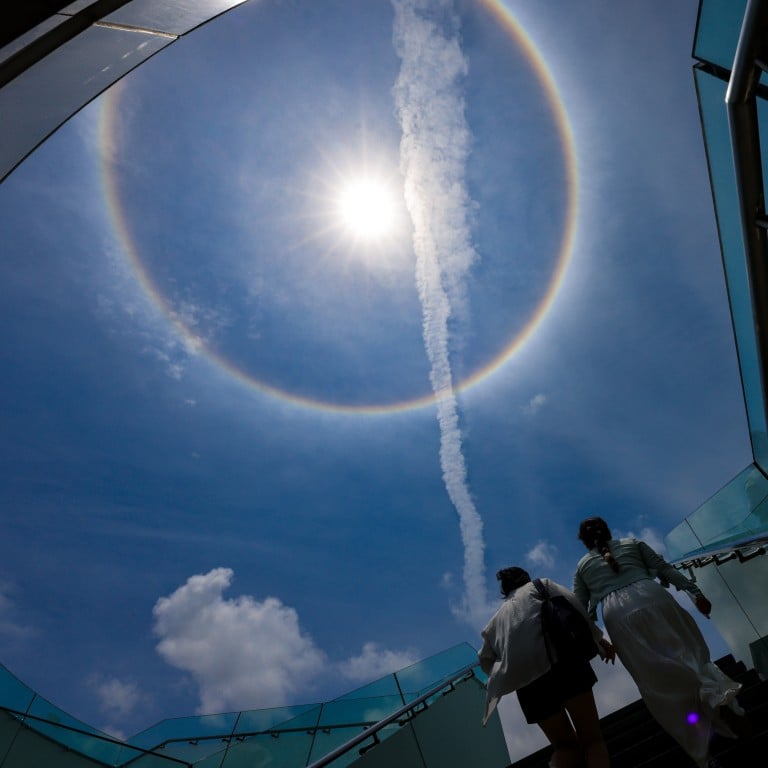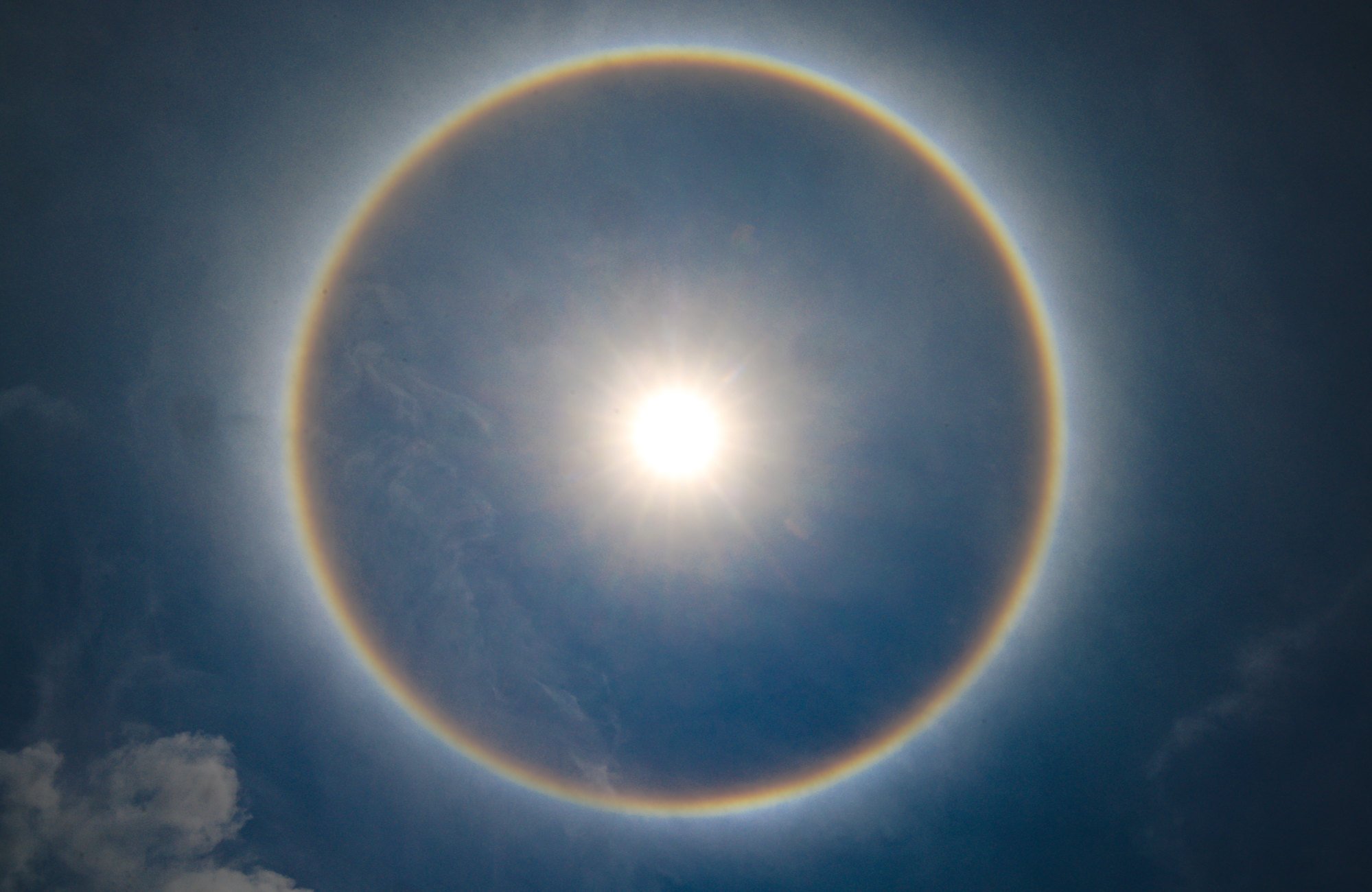
Halo effect hits Hong Kong, dazzling public with natural sun phenomenon
- Observatory says halos are created when sunlight hits ice crystals suspended high in the atmosphere
- Scientific officer at meteorological service says high clouds are required, where ice crystals form and create favourable conditions for halo formation
The Observatory posted pictures on its social media accounts at noon that showed a halo above its headquarters and asked the public to share images of the circular light as seen in their areas.
Dozens of people took to social media to share their view of the halo and discuss the meteorological marvel, which has been visible several times this month.
Jennifer Yip Ling, a scientific officer at the Observatory, explained that halos could be formed all year round and had been spotted in the last few years.

It is produced when sunlight is reflected or refracted by ice crystals suspended in the atmosphere.
“High clouds would be required … there would be some ice crystals in the high clouds and sunlight would need to be shining through the layers,” Yip explained.
High clouds are typically formed 23,000 feet (7,010 metres) to 40,000 feet above the ground. They are often translucent and created where ice crystals aggregate in the atmosphere.
Hong Kong logs hottest day of year yet as mercury hits nearly 32 degrees Celsius
A halo is also sometimes accompanied by “sundogs”, bright spots in the sky that resemble the sun.
Yip said the observatory had seen a small halo at noon and again at 1pm at their Tsim Sha Tsui headquarters on Tuesday.
A small halo has an angular radius of 22 degrees, with a pale red lining or a purple aura at times.
Hong Kong set for hot 2 weeks, with temperatures hitting 31 degrees Celsius
She added another type of phenomenon, the large halo, existed but was less commonly seen in Hong Kong.
A large halo has an angular radius of 46 degrees and is dimmer than the smaller version.
Yip added that the public should always be careful when observing halos and protect their eyes.
“Remember not to look at the sun directly, as strong sunlight can cause blindness,” she said.

